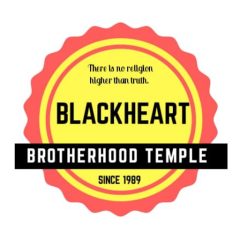
The cycle of the Wheel of the Year, based on the idea of growth and decay is in terms of ritual even more pertinent to magical working than, for instance, astrology with all its complexities. It enables us to give a structured approach to our ordinary, everyday lives.
The Wheel of the Year for pagans consists of eight Sabbats (celebrations of belief). All of them are solar, commemorating the stages of the relationship between the Sun God and Mother Earth and marking the passing of the year with natural milestones, such as planting and harvest.
Some pagans would define the Sabbats as major and minor. The major – and best-loved – ones are Samhain, Imbolc, Beltane, and Lughnasadh. The minor ones are Yule (winter solstice), Ostara (spring equinox), Litha (summer solstice), and Mabon (autumn equinox). This subdivision is by no means made by all pagans, many of whom feel that the Sabbats are of equal significance. It should be remembered that these seasonal celebrations will be celebrated in reverse in the southern hemisphere.
All eight celebrations have particular rituals associated with them and can be celebrated in as simple or complex a manner as you please. It is a time to honor the life force, however, one perceives it, and to give thanks both for – and to – it. At these times, the Goddess (the feminine principle) may be perceived as the Lady, the Moon Goddess, or any of the forms of the Triple Goddess – Maid, Mother, and Crone – that are appropriate. The God (the masculine principle) is worshipped as the Lord, the Sun God, or as the consort of the Goddess.
In any of the rituals given as examples, you are free to respect and address both God and Goddess as you please. It is the intention that is important, and any self-respecting magical practitioner will eventually get to the point where the rhythm and power of their own words will enhance the ritual. This is, after all, the naming and sounding of Sacred Words of Power, but with your emphasis.
Many of these seasonal celebrations have been appropriated by the Christian religion; we see this, particularly at Candlemas, which was originally Imbolc, Easter which was the celebration of Ostara, and Christmas which, of course, is the Yule festival. Many of the customs that survive today have their origins in the seasonal festivals. Those around Yule have survived almost intact.
Traditionally, 23 December is the only day not ruled by a tree or its corresponding Ogham letter in the Celtic tree calendar. The Celtic tree month of Ruis (Elder) runs until 22 December and the month of Beth (Birch) begins on 24 December, leaving a one-day intercalary period known as ‘The Secret of the Unshewn Stone’.
This was designed to bring the calendar back into line with the solar year. In Britain this the day there was elected the Lord of Misrule, Fool, and King of the Bean (who was chosen by getting the bean in the celebratory pudding).
The Christmas tree fairy is said to represent the White Goddess – she can be seen as Isis or any of the Great Mother Goddesses who give birth to the Sun Gods at midwinter. Greenery associated with this time also has its traditions. At his celebration of joy, Saturnalia, Dionysus wore a crown made from ivy – an evergreen and therefore symbolic of everlasting life and light. Holly has also always been sacred to Saturn and as such, played a part in the Saturnalia carnival. It features in Celtic folk myth, in the battle between the Holly King and the Oak King for supremacy for half of each year.
